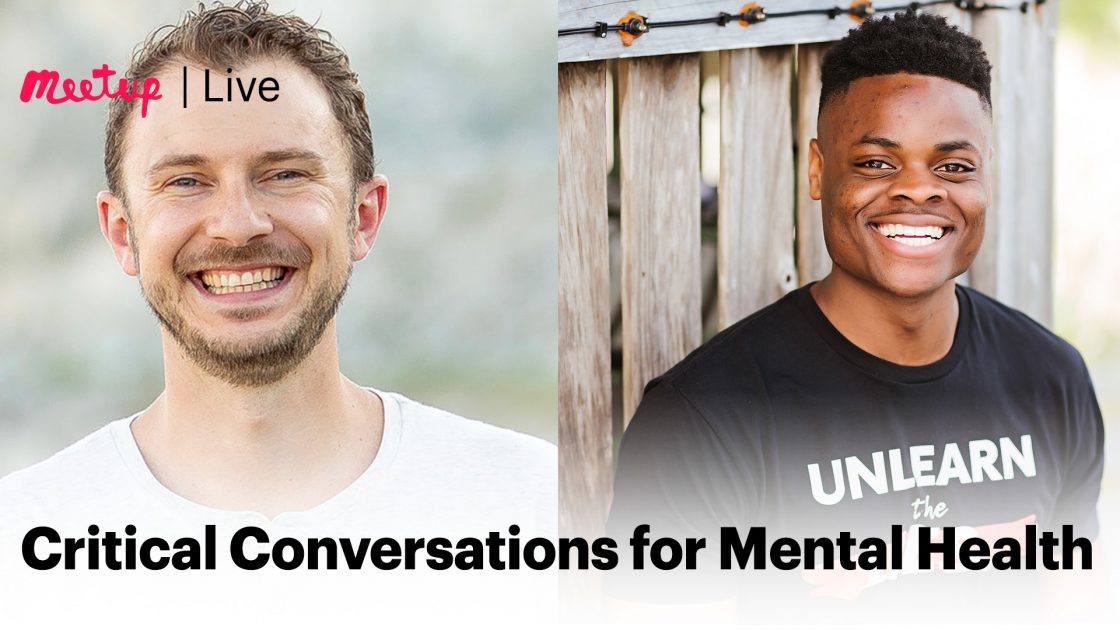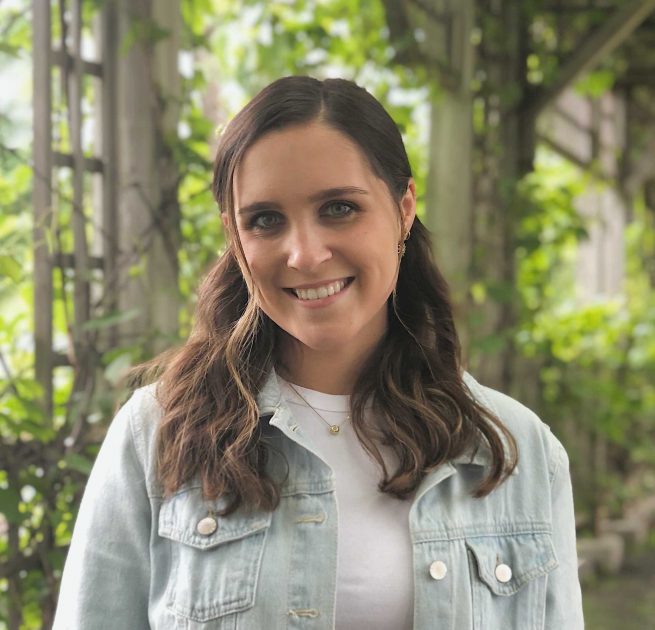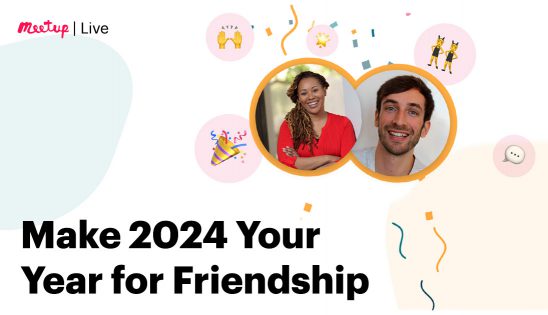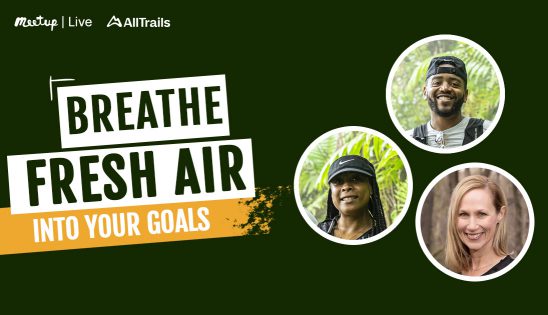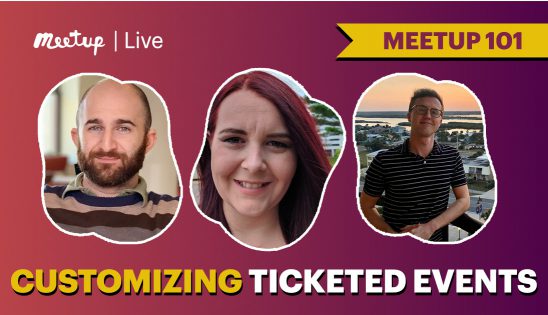Suicide occurs across all cultures and demographics, yet there are patterns and warning signs that often precede self-harm. With the right information, you will be better equipped to help friends and loved ones when it matters most. During this Meetup Live event, we discuss suicide prevention.
Watch Luke Wall, Executive Director at Only7Seconds, and Abraham Sculley, Founder of Speaks 2 Inspire, to learn about the age, demographic, and socioeconomic factors that influence suicide. Hear about situational warning signs and how to spot them so you can intervene appropriately. Get advice on starting conversations and asking the right questions to steer someone toward safety.
Main Takeaways:
- You can be suicidal and not have a mental illness. The simplest way to define mental illness is that it is a health condition that affects the way you think, the way you feel, and the way you behave. Mental illness is a health condition. There are other situational factors that cause someone who doesn’t have a mental illness to think about suicide, or even die by suicide.
- Situational factors to be aware of:
- Someone whose identity is tied up in their work who ultimately gets fired or they’re no longer able to work anymore, that can be a factor that causes them to think life is no longer worth living.
- There are other factors that can be linked to mental illness, which affects how we think. The misconceptions that we tell ourselves while struggling like, “If I’m depressed then I’m weak,” or “If I am not able to motivate myself out of bed then I don’t deserve to live,” or “I don’t deserve to progress in life.” So they’re multiple factors that exist that can cause someone to be thinking about ending their life.
- The lack of human connection or a lack of belonging are significant factors that can influence suicidal thoughts.
- Warning signs can be categorized into 3 groups:
- Verbal- clues that people will say.
- If they say something like, “I can’t deal with life anymore, I just want to end it”, “I want to go to sleep and never wake up”. These are all signs that we can hear.
- Behavioral- signs we can look for.
- If someone is suddenly giving away things that mean or have a lot of significance to them, their most prized possessions.
- Situational- something significant in someone’s life is lost
- Job, relationship, or possession that meant a lot to them
- Verbal- clues that people will say.
- After we Identify the warning signs, we can then intervene with a conversation when it is appropriate.
- The best thing that we all can do is come in curious. It’s tempting to come in with an agenda to try and solve a problem or fix someone. If we can all practice listening to understand, it helps us not only create that space where someone feels empowered to share their experience, but we will gain the information as to how we can support, so listening to understand is definitely a powerful thing that we all can implement.
- There are situations where there aren’t any clear signs. During this time try to be courageous enough to ask the question, “are you thinking about suicide?” That question just by itself opens up the space for a conversation that otherwise wouldn’t happen. A big misconception is that when you bring up suicide, then it’s now going to plant this idea in their minds. When you have these conversations, you become a “safe” person to talk to in that person’s mind. Anyone can prevent suicide, you don’t have to be an expert to start the conversation.
- If you are not comfortable asking this question, there are other options:
- “I’ve noticed that you’ve been, very unhappy lately. How are you doing”?
- “How have you been doing lately? You don’t seem like yourself”.
- “You’ve been slow to respond, and that’s not typically how you operate. Is there something going on right now”?
- If you are not comfortable asking this question, there are other options:
Top Q&A Questions and Resources:
- I think people who are depressed do not have the energy to reach out for help. Is there anything we can say or do to help encourage them to reach out?
- Most times we have to do more. You need that persistence of checking in, understanding it only takes 7 seconds, as Luke mentioned, but the consistency of that ultimately helps or can help that person to recognize the mental health support that is there for them.
Resources:
Call/text 988. Connect with a trained crisis counselor. 988 is confidential, free, and available 24/7/365. Visit https://988lifeline.org/ for more information about the 988 Suicide and Crisis Lifeline.
Speaks 2 Inspire’s resources. Text s2i to 22828 or visit https://speaks2inspire.com/resources/ to join Speaks 2 Inspire newsletter to receive exclusive content about young adult mental health, the mental health resource guide, best practices, and ways that your organization can work with Speaks 2 Inspire.
Loneliness Resources:
- I Know Lonely Guide (if you’re feeling lonely, this is a great starting point!)
- Together: The Healing Power of Human Connection in a Sometimes Lonely World
Only7Seconds Resources:
- Only7Seconds’ Connection Curriculum is a youth program designed to inspire intentional connections and develop empathy. We guide teachers and youth facilitators to create an environment where intentional and meaningful conversations take place. The nine-session program provides opportunities to engage with unique and diverse experiences, challenges, and successes. These stories and activities encourage 7th-12th grade students to connect with others and learn skills to address loneliness.
- People can best contact Luke/Only7Seconds at info@only7seconds.com
Speaks 2 Inspire Resources:
- Unlearn the Lies: A Guide to Reshaping the Way We Think about Depression addresses seven lies that infiltrate the hearts and minds of so many people, causing them to suffer in silence.
- QPR Gatekeeper Training– this two-hour training explores the prevalence and incidence of suicide. Participants will leave with a comprehensive booklet from the QPR Institute, resources, and three tangible skills that will help avert the tragedy of suicide.
- Website
Find events, join groups, and communicate with your people—from anywhere. Download the Meetup app today.
Last modified on November 8, 2022


